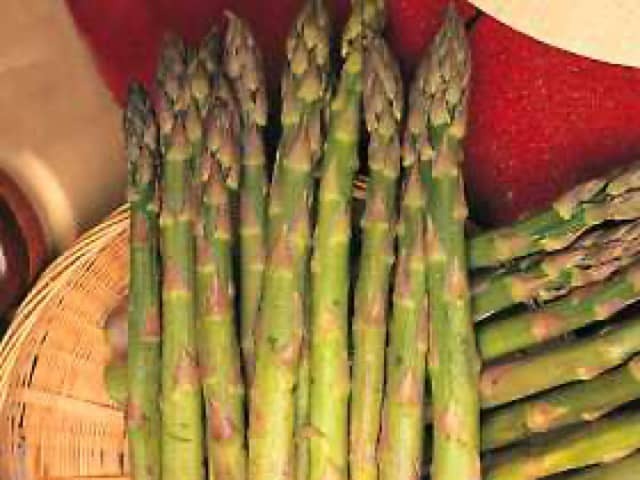Main menu
Common skin conditions

NEWS
Join DermNet PRO
Read more
Quick links
Author: Hon A/Prof Marius Rademaker, Dermatologist, Hamilton, New Zealand, 1999.
Common name: |
Asparagus |
Botanical name: |
Asparagus officinali |
Family: |
It belongs to the family Liliaceae (which includes tulips, onions and garlic). |
Origin: |
Originates from the Mediterranean. |
Description: |
Perennial plants produce separate male and female plants for 20 years or more. The underground portion of the plant consists of stems from which the edible 'spears' grow upward each spring; the male plants yield the best spears. |


Uses: |
Several species of asparagus are of horticultural value, particularly as foliage for flower arranging, e.g. Asparagus spengeri, A. plumosus, and A. medeoloides. The young shoots of A. officinalis are highly esteemed as a vegetable. |
Allergens: |
Asparagus contains asparagin, coniferin, and the glucoside, vanillin. The allergen, however, appears to be 1,2,3-Trithiane-5-carboxylic acid, a sulfur-containing growth inhibitor which appears to be present mainly in the early phase of the growth season. |
Allergy: |
The first report of possible contact dermatitis to asparagus was reported in 1880. Allergy to asparagus is well recognized in Germany, particularly amongst pickers, canners and vegetable cooks. Young shoots appear to be most allergenic. It usually causes a fingertip dermatitis, which can affect the whole of the hand. Other forms of allergy to asparagus are also recognised. This includes contact urticaria (swollen lips from eating asparagus), conjuntivitis, rhinitis, and asthma. There has also been one case of acute urticaria following ingestion of asparagus. |
Cross reactions: |
|
Other information: |
The European preference is for white asparagus, whilst in New Zealand and Australia, new cultivars of green or red asparagus are more popular. |
Patch test: |
10% ether extract, 10% water extract. |